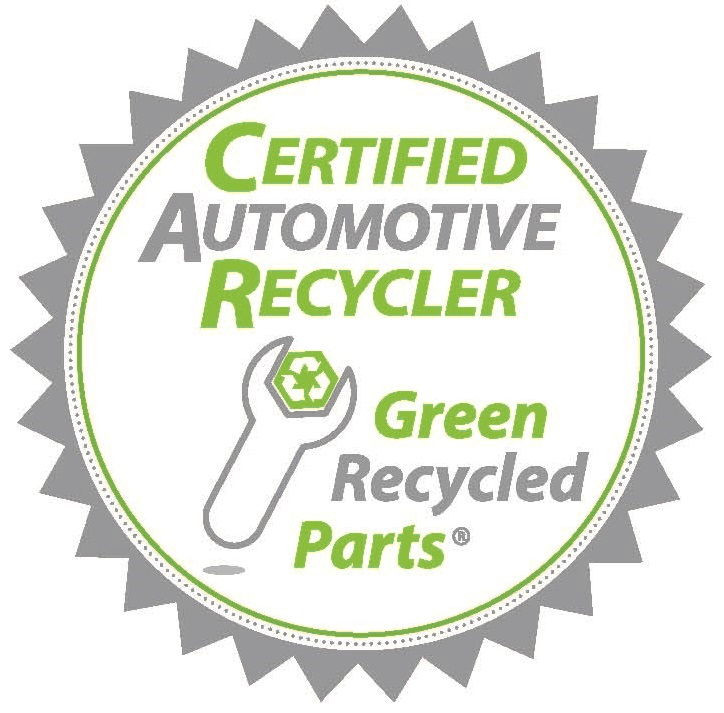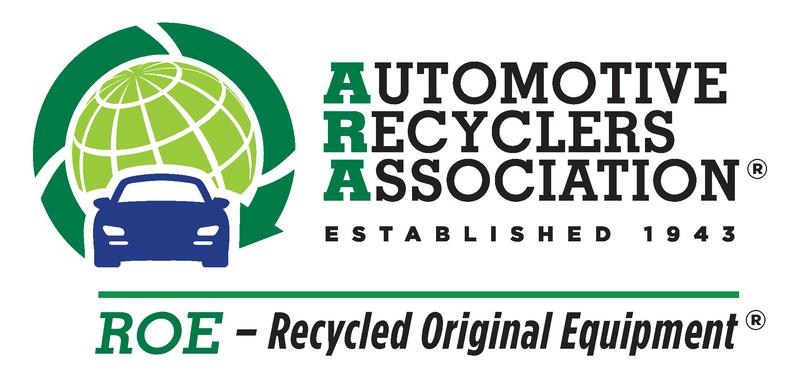The following fact sheets are designed to assist automotive recyclers with operating their businesses and managing their wastes in compliance with the environmental laws in Iowa. Select from the list below.
Certified Auto Recyclers
Many professional automotive recyclers use a certification program to attain and maintain compliance with environmental, safety and transportation rules applicable to salvage facilities. The Automotive Recyclers Association (ARA) Certified Auto Recyclers (CAR) program sets a standard of excellence as the path to compliance.
Members of the Maine Auto Recyclers Association utilize the ARA CAR program as a resource. Facilities that have achieved certification communicate to the marketplace that they have successfully undergone a comprehensive assessment and their processes and organization meet defined standards.
Regulatory Agency
Maine Department of Environmental Protection (DEP) is responsible for protecting and restoring Maine's natural resources and enforcing the state's environmental laws. The agency can trace its roots back to the Sanitary Water Board that was created in 1941. The purpose of that Board was to study, investigate, recommend means of eliminating and preventing pollution in waters used for recreational purposes. The Board was renamed the Water Improvement Commission in 1951. In 1969, the Commission's title was abbreviated to the Environmental Improvement Commission.
On July 1, 1972, legislation re-designated the Commission as the Board of Environmental Protection and created a new Department of Environmental Protection, consisting of a commissioner and three program bureaus: Air Quality, Land Quality Control, and Water Quality Control. Over the years, the Department has continued to evolve to its current organization consisting of the the Commissioner's Office and four bureaus which administer the Department's environmental programs: Air Quality, Land Resources, Remediation and Waste Management and Water Quality.
EPA Region 1 (New England) Serving Connecticut, Maine, Massachusetts, New Hampshire, Rhode Island, Vermont and 10 Tribal Nations. https://www.epa.gov/aboutepa/epa-region-1-new-england
EPA New England Headquarters
5 Post Office Square - Suite 100
Boston, MA 02109-3912
New England States: (888) 372-7341
(Answered by voice mailbox which is checked daily, Mon - Fri. Calls returned within 24 hours Mon - Fri.)
Outside New England: (617) 918-1111
Stormwater Regulation
Maine DEP’s stormwater laws and regulations work toward protecting and restoring surface water and groundwater impacted by stormwater flows. Stormwater runoff from developed areas carries pollutants and affects the rates and volumes of flows in natural waterbodies in ways that can cause damage. Everyone has a role in reducing impacts from stormwater runoff, from the large developer constructing a new parking lot, to the homeowner using good erosion control methods and handling chemicals carefully around the house. Maine DEP developed a geberal inforamtion Stormwater Industrial Permit Fact Sheet:
Maine DEP Industrial Stormwater information is available at https://www.maine.gov/dep/water/wd/multisector/index.html
Permit specifics can be found at right and in the Maine DEP Stormwater Permit Guide at
Spill Reporting
National Response Center
If the hazardous condition involves the release of an EPA regulated material or an oil as defined by the EPA, the release may also need to be reported to the National Response Center at (800) 424-8802. Federal Reporting is required within 15 minutes of event occurrence or discovery.
The National Response Center (NRC) is a part of the federally established National Response System and staffed 24 hours a day by the U.S. Coast Guard. It is the designated federal point of contact for reporting all oil, chemical, radiological, biological and etiological discharges into the environment, anywhere in the United States and its territories.
Resources
Maine Small Business Assistance Program http://www.maine.gov/dep/assistance/sbap/is-sbtap.html
The Small Business Technical Assistance Program (SBTAP) helps small businesses comply with the Clean Air Act and other environmental regulations. The SBTAP uses education, outreach, on site assistance, and pollution prevention techniques to assist business achieve compliance and reduce pollution and waste.
Pollution Prevention Resource Exchange (P2Rx™) http://www.p2rx.org/
P2Rx is a national partnership of regional pollution prevention information centers funded in part through grants from EPA. We build networks, deliver P2 information, and measure P2 program results.
The Northeast Waste Management Officials' Association (NEWMOA) http://newmoa.org/
NEWMOA is a non-profit, non-partisan interstate association whose membership is composed of the state environmental agency directors of the hazardous waste, solid waste, waste site cleanup, emergency response, pollution prevention, and underground storage tank programs in Connecticut, Maine, Massachusetts, New Hampshire, New Jersey, New York, Rhode Island, and Vermont.
NEWMOA's mission is to develop, lead, and sustain an effective partnership of states that helps achieve a clean, healthy, and sustainable environment by exploring, developing, promoting, and implementing environmentally sound solutions.
NEWMOA’s projects include:
NEWMOA formed its Northeast Pollution Prevention and Sustainability Program in 1989 to enhance the capabilities of the state and local government environmental officials in the Northeast to implement effective multi-media source reduction and assistance programs and promote sustainability and improvement in public health and the environment. http://www.newmoa.org/prevention/about.cfm
Waste Tire Projects - NEWMOA has prepared several reports on waste tires to help state programs improve the management of this large waste stream, including:
Review of Northeast States' Tire Programs
Northeast End Markets Tire Waste Paper
Waste Tires in the NEWMOA States
Industry experts estimate that waste tires (also known as scrap tires) are generated at a rate of about one tire per person per year. Using recent census data for the northeast, NEWMOA estimates that the number of waste tires produced in the northeast is approximately 43.3 million per year (based on the 2018 census). Although today's tires last for more miles than they did in the past, the number of cars on the road is increasing, and the average number of miles driven annually is also increasing. https://www.newmoa.org/projects/waste-tires/
Auto Body Refinishing Project - NEWMOA worked with the Small Business Environmental Assistance Programs (SBEAPs) in the six US EPA Region 5 states (IL, IN, MI, MN, OH and WI) to develop and implement an Environmental Results Program (ERP) for autobody refinishing shops.https://www.newmoa.org/projects/region-5-autobody-initiative/
STORMWATER
Sector M - Automobile Salvage Yards
M.1 Covered Stormwater Discharges. The requirements in Sector M apply to stormwater discharges associated with industrial activity from Automobile Salvage Yards as identified by the SIC Code 5015 Motor Vehicle Parts, Used (merchant wholesalers except those selling via retail method) or NAICS Codes 423140 Motor Vehicle Parts (Used) Merchant Wholesalers.
M.2 Additional Technology-Based Effluent Limits.
M.2.1 Spill and Leak Prevention Procedures. Drain vehicles intended to be dismantled of all fluids in accordance with applicable local and State requirements. Additionally, the permittee must employ procedures, practices or controls to prevent spills and leaks from vehicles that have the potential to contribute pollutants to stormwater.
M.2.2 Employee Training. If applicable to your facility, address the following areas (at a minimum) in your employee training program: proper handling (collection, storage, and disposal) of oil, used mineral spirits, anti-freeze, mercury switches, and solvents.
M.2.3 Management of Runoff. Implement control measures to minimize discharges of pollutants in runoff such as the following, where determined to be feasible (list not exclusive): berms or drainage ditches on the property line (to help prevent run-on from neighboring properties); berms for uncovered outdoor storage of oily parts, engine blocks, and above-ground liquid storage; installation of detention ponds; and installation of filtering devices and oil and water separators.
M.3 Additional SWPPP Requirements.
M.3.1 Drainage Area Site Map. Identify locations used for dismantling, storing, and maintaining used motor vehicle parts. Also identify where any of the following may be exposed to precipitation or surface runoff: dismantling areas, parts (e.g., engine blocks, tires, hub caps, batteries, hoods, mufflers) storage areas, and liquid storage tanks and drums for fuel and other fluids.
M.3.2 Potential Pollutant Sources. Assess and describe the potential for the following to contribute pollutants to stormwater discharges: vehicle storage areas; dismantling areas; vehicle crushing; parts storage area(s) (e.g., engine blocks, tires, hub caps, batteries, hoods, mufflers, etc.); fueling location(s); fuel and fluid removal from vehicles scheduled crushing or dismantling; and fluid storage. Mercury switches must be removed from vehicles and stored in accordance with applicable local and State requirements. A Motor Vehicle Mercury Switch Log Sheet must be kept on site in the designated Universal Hazardous Waste Area of the facility.
M.4 Additional Inspection Requirements. Immediately (or as soon thereafter as practicable) inspect vehicles arriving at the site for leaks. All equipment containing oily parts, hydraulic fluids or any other types of fluids must be inspected monthly. Inspect all fluid containers and containment areas monthly for signs of spills and leaks. Also, inspect monthly for signs of leakage all vessels and areas where hazardous materials and general automotive fluids are stored, including, but not limited to, mercury switches, brake fluid, transmission fluid, radiator water, and antifreeze.
M.5 Sector-Specific Benchmarks. No benchmarks are established for Sector M.







